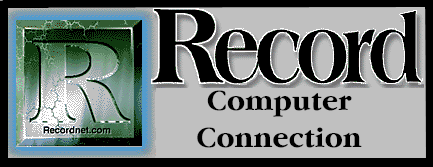

I am often asked the following question: "Why does WordPerfect for Windows start every time I power up my computer?", or "Why does Winfax come up whenever I turn my computer on?" The answer lies quite simply in a largely ignored Windows program group called StartUp. StartUp is a group that Windows recognizes and searches through each time you begin a Windows session. Any program icons in this group will automatically be executed as Windows is loading. Sometimes when you install new software to your system, some pushy programs intrude right into your StartUp group without your permission! From your Windows Program Manager, double-click on this program group icon and see what's inside.
If you see an icon in the StartUp group that you don't want to execute each time you start Windows...simply remove it by highlighting the icon, then pressing the delete key on your keyboard. That's all there is to it. Remember...eliminating icons from Program Manager does not delete anything from your hard disk. (This can only be done in the File Manager). You can add, change or delete icons and program groups in your Program Manager, without affecting any of your programs or files.
On the other hand, if you'd like the convenience of having Windows automatically run a frequently used program, just add it to your StartUp group by using the mouse to drag the program icon from its original location into the StartUp group. This process moves the icon from one location to another.
If you share your system with others, however, it is more polite to press and hold the Control key on your keyboard while dragging the icon to a new location. Depressing the Control key, while dragging with the mouse, copies the icon to a new location, rather than moving it, leaving the original icon intact.
For added convenience and good program management, create your own program groups and then copy frequently used icons into your group. From Program Manager, choose File, New, Program Group, then simply type a descriptive name and press Enter, or click on OK. You've just created your own, unique Program Group.
Now you're ready to copy your favorite program icons into your custom group. Be sure to depress the Control key, while dragging icons with the mouse, to copy...rather than move icons between program groups. Once you have your own group customized, minimize the other programs groups to preserve system resources. All those open windows sap precious Windows resources, causing system slow down. If your Program Manager appears unruly and disorganized after all this, Choose Window, Tile from the Menu bar to tidy up your desktop.
More advanced users can copy actual files or documents as icons into their unique program groups or into the StartUp group, for ease in execution. Size both Program Manager and File Manager, side-by-side, until both the files and the open program group are visible. Select the desired file from the File Manager, depress and hold the Control key, then drag the file icon into either the StartUp group, or your custom group. Windows creates an icon for the file with the name of the application associated with the file. When you double-click on the newly-created file icon, both the application and the file will be loaded into working memory.
If you have program groups with only one or two icons, move the icons into a general group, such as Applications, All Games or My Stuff, and then delete the superfluous program group, by pressing the Delete key. (Program groups can only be deleted when they are minimized as icons.) Every new application or game you add to your system will probably create its own program group. It's a status thing. Everyone wants their own group represented in your Program Manager...but they aren't necessary and they also gobble up resources.
Fine tuning and customizing your Program Manager makes good computing sense!
Feedback? E-Mail cschuler@ceeprompt.com